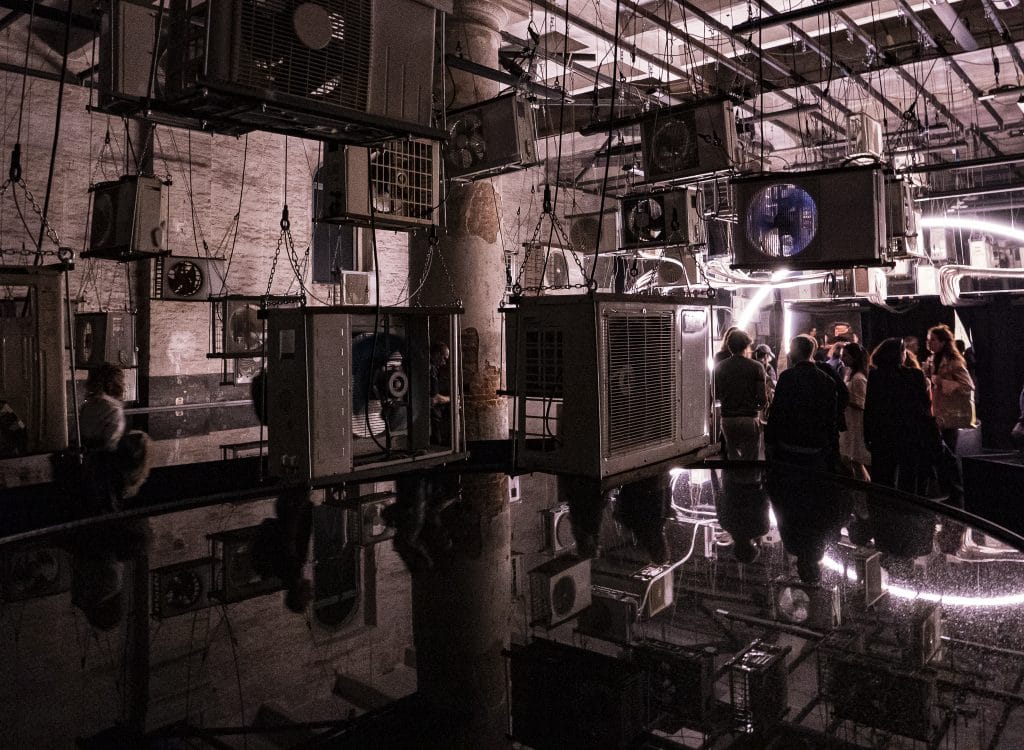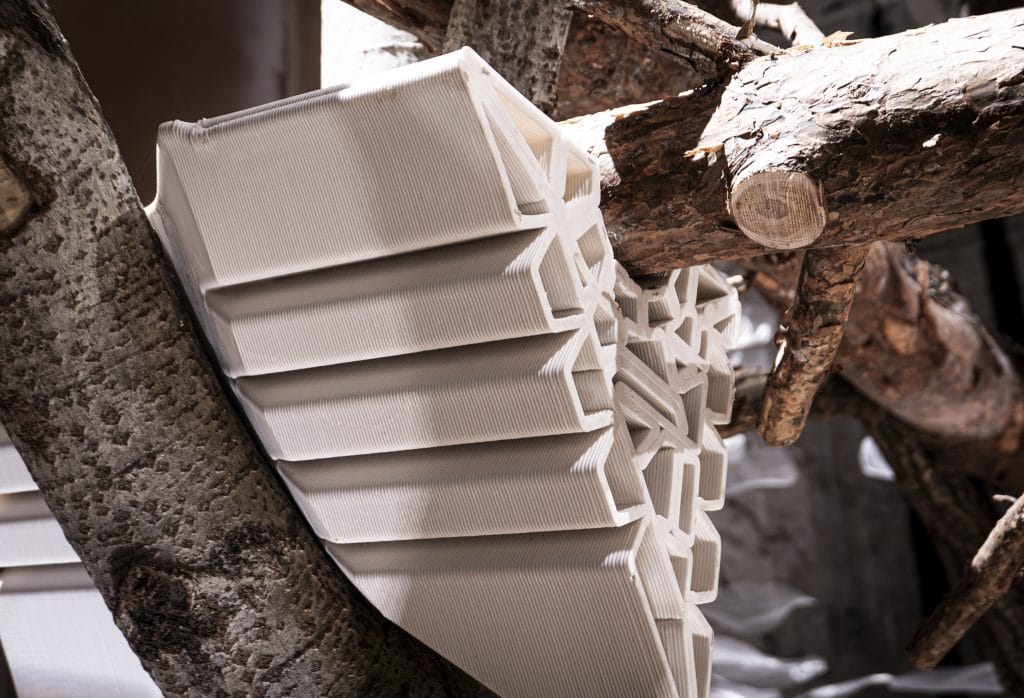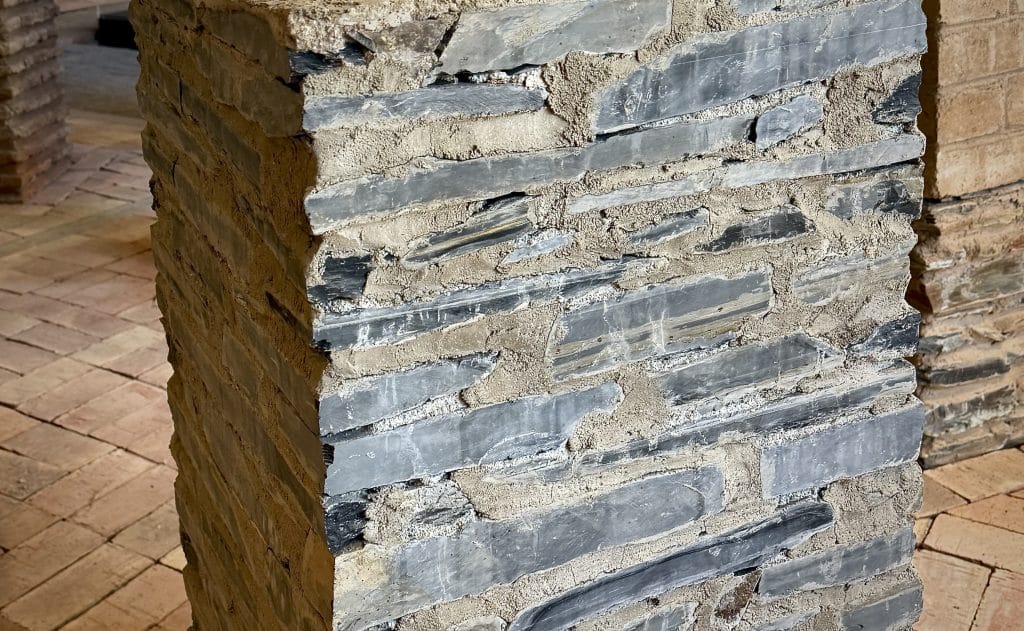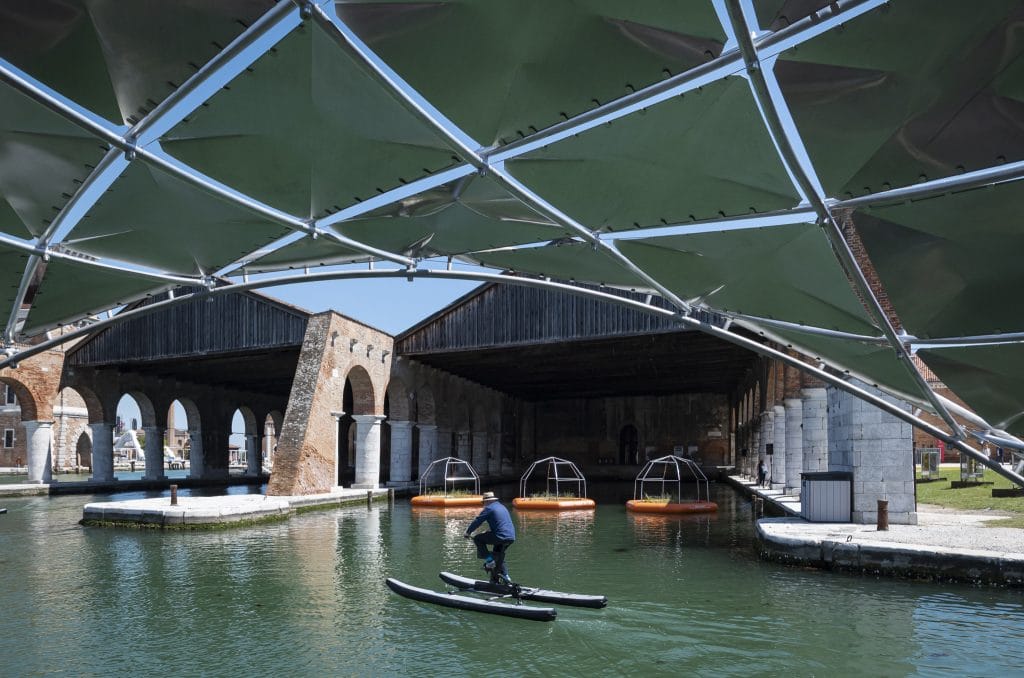By Marianna Wahlsten
While the Biennale has received critical comments for being chaotic and providing too much content, it is simultaneously a great reflection on current global concerns and tendencies. Lead by Italian architect and engineer Carlo Ratti, the 2025 Biennale, titled Intelligens. Natural. Artificial. Collective, aims to break some boundaries, exploring the potential for technological solutions for saving the planet. Professor at the MIT in United States, as well as running his own global design firm, Ratti is passionate about the latest discoveries in tech for architecture. To the point, where some believe, his enthusiasm seems to overrule any aesthetic and social sensibilities. However, without preaching, Ratti’s curatorial work brings up some controversies.

The main exhibition takes place at the gigantic Corderie dell’Arsenale shipyard. It is one of the greatest exhibition spaces in the world and the entry sets the underlying tone for this incredibly varied showcase for ideas and approaches in contemporary architectural culture. This year there are over 300 projects exhibited, chosen from an open call.
The first project launches the narrative, as you are immersed in the dystopian malfunction of the ‘machine-to-live-in’. This room represents a strange sense of realism – the uncanny – while deconstructing the technological premises of Modernism. Like a cinematic set, it shows the paradox of the modern air-con systems, which keep pushing out and generating more heat outside. The scene recalls the iconic artwork by British artist Richard Wilson, in which the viewer is perplexed by reflective surfaces and the smell of gasoline. While in here, it’s the heat, an instant reminder of the contemporary condition of crisis.
Walking through the 700 meters long shipyard, it is difficult to study each participating project. As an extreme alternative Ratti suggests the possibility of running through it in 15 minutes, to get a speedy overview in the style of the scene in the Godard movie shot at the Louvre. Or if you really want to get familiar with each exhibited project, it could take a whole week Ratti admits. The space is filled with installations showcasing experimental projects with materials and digital tools, for example the installation by Kengo Kuma Architects, made of tree trunks, collected on the landscape in Italy after a storm, held together with 3D printed supports. Apart from the AI-based design method on which the components were assembled, it doesn’t seem to have any direct significance for architectural design. It is rather like a poetic evocation of natural forces, technological culture, raw materiality, and hope for healing.

There are several exhibited projects that borrow the language of conceptual art, which is perhaps the way ideas are fused today and how influences circulate across art, architecture and design as part of a wider cross-cultural discourse. There are also lots of beeping robots and other sounds recalling the universal technological condition that underpins our daily moves and orchestrates what we can do. Although there were some complaints about the chaotic nature that these machines induced, robots are part of the digital workflow in construction industry, which couldn’t be overlooked at the Biennale. And the fact that short introductory texts for each exhibited project were created with AI was a great help and a showcase for the use of AI in organising information. It would be interesting to know if any of the curators had objected to this… In any case it was a way for providing a unified and neutral summary for each project, always helpful.
Towards the latter half of the Arsenale exhibition, after crossing through the mix of projects on all scales, ‘Material Palimpsest’ at the Moroccan Pavilion delights through its simplicity. The sensorial aspect of the material presence stands out against the overload of tech. Curated by Atelier BE, the exhibition is a showcase for Moroccan traditions of using earth as material for construction, combined for more precision with the use of digital software. Curators Khalil Morad El Ghilali & El-Mehdi Belyasmine explain that digital tools are used in their practice for mapping, modelling and simulating traditional techniques for adopting them for contemporary situations. Parametric modelling supports prototyping of more complex elements while using local materials. They strongly believe in the hybridisation of design processes, combining low tech approaches with the precision offered by new technologies, “It’s not an opposition, but a fertile dialogue”, they say.

Awarded the Golden Lion for the best pavilion, one of the last exhibited projects at the Arsenale is titled ‘Heatwave’ at the Bahrain Pavilion, which makes for the perfect ending in Ratti’s curatorial narrative. The space is furnished with giant sand-filled cushions for seating – much appreciated after coming through the exhaustive amount of mind-blowing information. Calming by its minimalist presentation, which initially doesn’t give much away. In total contrast to the estrangement of the effects of failed technology showcased at the very first space at the start of the Arsenale show, this gallery has been equipped by a system for air-conditioning, based on a natural mechanism drawing cooling air from the ground, designed for outside cooling to ease working conditions under extreme heat. The system seems mysterious, but the experience brings pleasure and hope as a positive outcome through its elegant simplicity.

Outside after the far exit of the shipyard, ending on a high note celebrating technological design, the project created by Norman Foster with Porche brings a sense of shimmering fun after the intensely animated stroll through the Corderie dell’Arsenale galleries. On the quay side a gateway leads onto a jetty where rides can be taken over the water with bikes gliding smoothly over the lagoon, exemplifying the high-tech aesthetics of Fosters practice. The pier is covered with lightweight pieces of aluminium moving in the wind, providing shade, while sustaining cooling airflow through the gateway. Foster’s engineering supports this new transport mode, which, who knows, could provide a new perspective for exploring Venice in the future.
